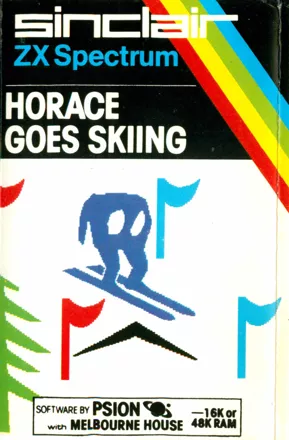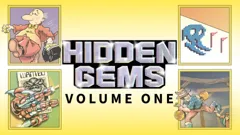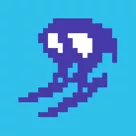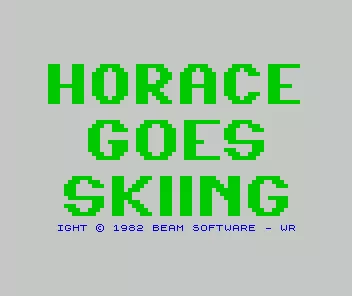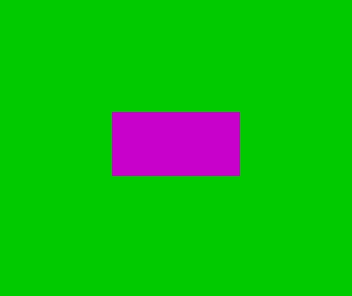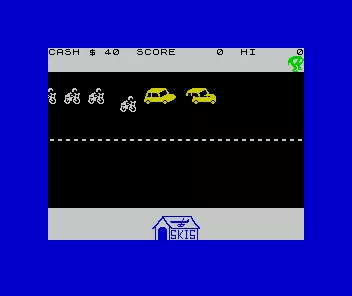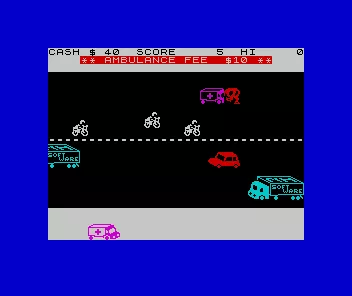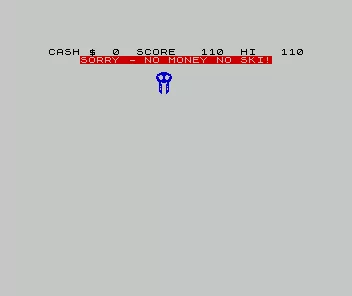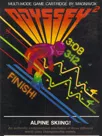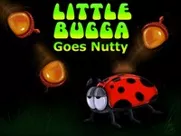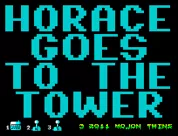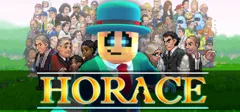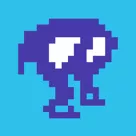Horace Goes Skiing
Description official descriptions
A more accurate title for this would be "Horace Goes Skiing, but only if he can brave a Frogger clone first", as you start the game by having to reach the ski shop to get skis, and then get back across to reach the slopes. The road is full of cars and bikes, contact with each of which costs $10 in ambulance fees out of your starting $40, and the skis themselves cost $10.
The actual skiing section has a pseudo-3D view, similar to a roving camera mounted above the course. Your task is to cut between the red and blue sets of flags, without hitting any of the trees on the course. Light contact with these will allow you to carry on; heavy contact breaks your skis and sends you back to the first section of the game (which you also return to after completing each of the courses).
Spellings
- Horace Goes Ski-Ing - Alternate spelling
Groups +
Screenshots
Videos
Add Trailer or Gameplay Video +1 point
See any errors or missing info for this game?
You can submit a correction, contribute trivia, add to a game group, add a related site or alternate title.
Credits (ZX Spectrum version)
| Written by |
Reviews
Critics
Average score: 67% (based on 7 ratings)
Players
Average score: 2.9 out of 5 (based on 15 ratings with 3 reviews)
IS HORACE A SPECCY SYSTEM SELLER?!
The Good
One of the first games for the Speccy. The developer went wild with the colours. I love it!
The skiing section is actually a lot of fun trying to beat your score.
The Bad
The Frogger get to the other side side of the road is a bit hit and miss. Say a prayer and go for it.
The Bottom Line
Another fun iconic title for the Spectrum.
ZX Spectrum · by BigM · 2025
Two games for the price of one, neither especially good.
The Good
Skiing is one of those sports that translates into the Dragon's color suite quite well- the normally garish "buff mode" a term popularized by Microdeal which refers to one of the two color sets in PMODE3, is an obvious choice when a game has to represent both white snow and brown and green trees. So with the color suite working in the games' favor, all we need to sort out is smooth game play, sound effects and music. Reassuringly the game starts with one of the best pieces of music on the Dragon at the time - this was before programmers became adept at pseudo multi channel sound, and by comparison some games were still making sounds that could be knocked up in basic by a ten year old using the PLAY or SOUND commands. To have a genuinely great piece of music playing at the start was a pleasant surprise that promised much- great music and the Dragon had by and large been strangers up until now, so the game seemed like it would be a sure fire winner, providing the collision detection was up to scratch, which it was.
The Bad
First up we have to play a small Frogger clone. Games that have many parts are not unusual- the 6809 machine had Tron clones, for example, but the rule is they had better be meaningful, and varied and this one did not feel meaningful to me, being long enough to get in the way of the main event but too short to generate involvement. Crossing the road to get ski equipment might sound like a great opportunity for a Frogger clone that someone had mailed into the office as a demo, but this is a simple clone of a Frogger game that had already been officially released on the machine by this point, and although the official version is not stellar, it certainly was not better than this and was quite involved compared to this quick knock off preamble to the main event of skiing. As we move on to the skiing it feels rather rushed- all the elements are there you would expect, trees, timing, obstacles,but if you crash too badly you get sent back to play more Frogger, which tells you something about the quality of the Frogger. The skiing section should have been longer and more involved- "Horace goes skiing for a bit and plays Frogger" is a less snappy but more truthful title. Skiing game play is at least smooth enough, and although the sound-fest promised by the lovely title music never materializes, the skiing bit has potential. Sadly the identification of hazards a bit random, and you are never quite sure where you are supposed to go, finding out by trial and error, a common fault in skiing games, especially on graphically limited systems, and it is over too quickly, giving us more Frogger. A menu allowing you to skip Frogger clone part and adjust the difficulty of the skiing would surely have been a better bet?
The Bottom Line
Overall someone thought they were putting out value, two games for the price of one, but really, one better game would have sufficed rather than two mediocre ones, and this was the last Horace entry for the Dragon, and the last time the company made games for the system, which says something. At least the intro music is lovely.
Dragon 32/64 · by drmarkb (105) · 2020
The Good
This game is one that I played for hours as a kid. it's just a very fun game although I did get very frustrated as I would spend about 90% of my time on the first stage on the road rather than doing any actual skiing. I find it much easier now though.
The Bad
It's quite a simple game but it was made to fit into 16k for the spectrum so that's really to be expected.
The Bottom Line
Great fun little frogger/sport game but which may be more of interest in a nostalgic way for spectrum users.
ZX Spectrum · by Sic Coyote (48) · 2007
Analytics
Related Sites +
-
Kio's home
For ZX Spectrum: additional material including – photographed cassette inlay; snapshots; downloadable releases. -
The Tipshop
For ZX Spectrum: a central archive for all Spectrum and SAM games hints, tips, cheats, maps, hacks and pokes. -
Wikipedia, the free encyclopedia
Encyclopaedic entry for the combined platforms of the game. -
World of Spectrum
Archive file / Download and play links / Additional material / Remakes / Player reviews / Magazine references / Magazine adverts
Identifiers +
Contribute
Are you familiar with this game? Help document and preserve this entry in video game history! If your contribution is approved, you will earn points and be credited as a contributor.
Contributors to this Entry
Game added by Martin Smith.
Commodore 64, Timex Sinclair 2068 added by Kabushi. Antstream added by lights out party. Dragon 32/64 added by Игги Друге.
Additional contributors: ZeTomes.
Game added December 13, 2004. Last modified March 3, 2025.


